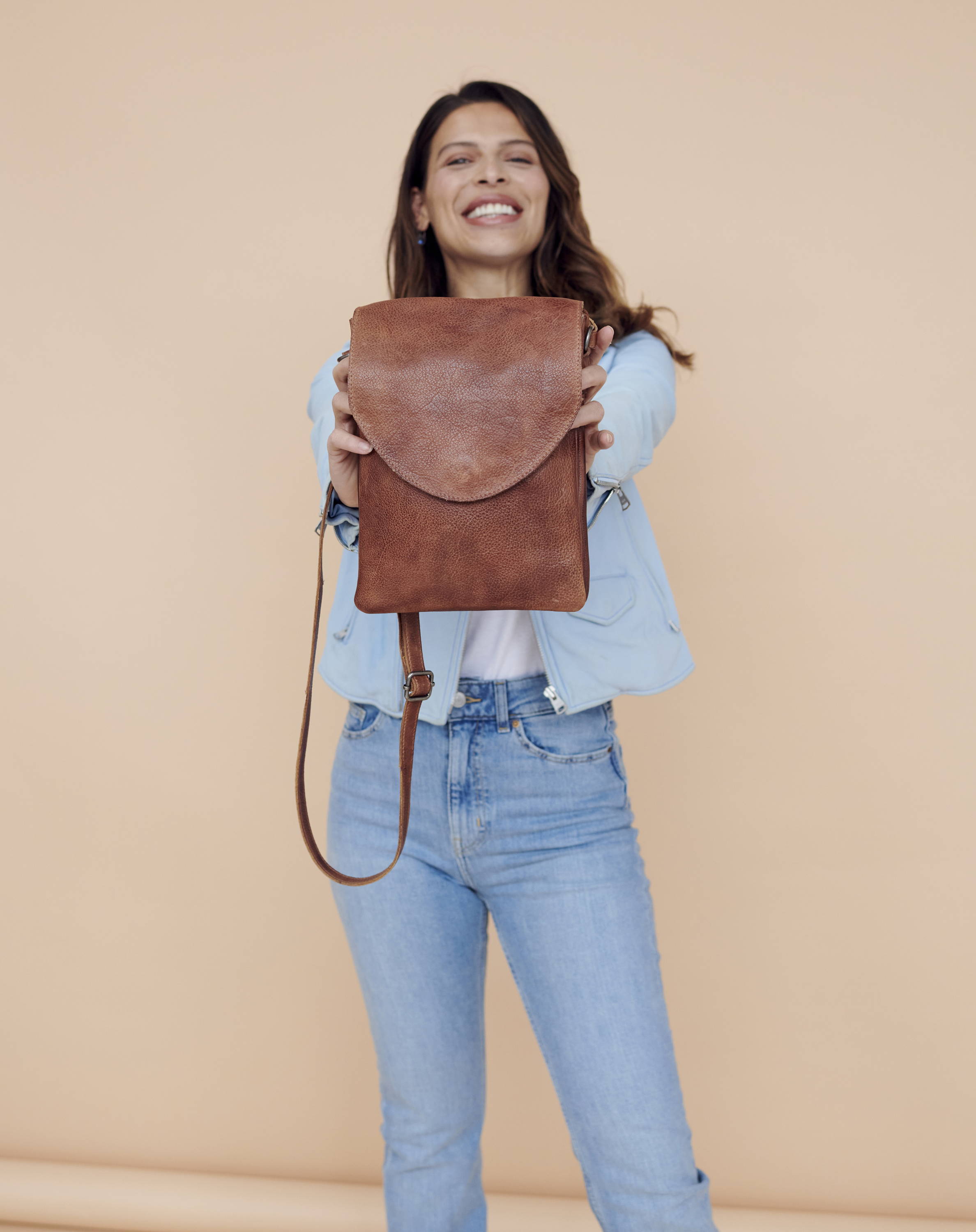
What Is Full Grain Leather?
When shopping for leather goods, knowing the types of leather available can mean the difference between purchasing an item that lasts and something that falls apart quickly.
Full grain leather is the gold standard for quality and longevity. If you want a material that combines strength with timeless appeal, this one ticks all the boxes!
Here's everything you need to know about this luxury material.
What Is Full Grain Leather, Exactly?
Full grain leather is the highest quality leather you can buy.
It’s made from the outermost layer of the animal hide but skips sanding or heavy chemical treatments, setting it apart from other leather types. This natural approach creates the densest, most durable leather possible.
Because the surface stays unaltered, full grain leather offers superior breathability, develops rich patina over time, and provides excellent resistance to moisture and wear.
The minimal processing also keeps each piece distinct, with natural marks like scars or wrinkles, making it a favorite for high-end products like bags, shoes, and furniture.
How Is Full Grain Leather Made?
Compared to other leather types, the manufacturing process for full grain is surprisingly clean and simple:
-
First, a full cut of cowhide (or buffalo) is soaked and cleaned. All subcutaneous materials, fat, and hair are removed.
-
Next, the hide goes straight into the tanning process, transforming the material from its raw state into something stable enough to use in products. A rotating drum containing tanning material (like vegetable dye or chromium) is used to soak the leather until its pH levels have stabilized.
-
Finally, the leather is removed, dried, and ready to go.

The Characteristics of Full Grain Leather
Several key characteristics make full-grain leather stand out as a highly sought-after material:
-
Top layer of animal hide: Because full grain is made from the outermost layer of the animal hide, it retains its natural grain pattern.
-
Durable: The dense grain structure makes it incredibly tough and resistant to wear and tear.
-
Imperfections: Scars, bites, or wrinkles from the animal remain visible, adding character and authenticity to the final product.
-
Breathable: Full grain has great moisture resistance with minimal heat buildup, because its natural state retains air flow.
- Patina development: Full grain develops a rich patina over time and often looks better with age.
- Water resistant (to a point): Although no leather is completely water resistant, full grain is more so than most thanks to its dense network of fibers.
The Benefits of Using Full Grain Leather
Since full grain is the highest quality leather, its benefits are numerous:
- Thanks to the imperfections in the animal hide and the natural patina it develops, full grain leather has an aesthetic appeal that only grows over time. Each piece you buy has an individual character that simply can't be recreated with synthetic materials.
- Additionally, full grain leather has long-term value, and each product can last decades if it's well cared for. This also makes it the most sustainable leather type available.
- Speaking of care, full grain is surprisingly low-maintenance, resisting dirt and moisture better than other grades of leather and aging well without constant upkeep.
- Super comfortable, full-grain leather molds to your body with use. Items like shoes, belts, furniture, and apparel eventually become like a second skin.
- Lastly, this type of leather signals quality craftsmanship and high-end products, and is often associated with premium or luxury brands. Each piece is a statement, for sure.
The disadvantages of full grain leather
While we can't fault full grain for its beauty and durability, there are some reasons why you may choose top grain or genuine leather instead:
- Full grain is more expensive than other leather grades, so it's not ideal for budget shoppers.
- The initial stiffness requires a breaking-in period, which means it can initially be uncomfortable to wear, especially for shoes.
- Since it retains the entire grain, it's susceptible to scratches and marks. Some believe this adds to the character, while others prefer a uniform look.
- Full grain is also the heaviest option. This is great for strength, but not so much for those looking for a lightweight accessory.

Full Grain Leather vs. Other Leather Grades
Knowing the distinctions between different types of leather will help you quickly identify the "real deal" when browsing the aisles.
Full grain leather vs. top grain leather
Top grain leather, the second-highest grade, is processed similarly to full grain but with a key difference: its surface is sanded or buffed to remove natural imperfections, then coated for protection.
The result is a smooth, uniform appearance that develops less patina over time.
Top grain leather is still durable, but less so than full grain. The cost is also a little lower.
When choosing between full-grain vs. top-grain leather, you'll typically see full-grain leather used in luxury goods and heirloom products. Top grain leather better suits modern, polished products that prioritize uniformity.
Full grain vs. genuine leather
Genuine leather is low-quality leather and, in our opinion, has a misleading name.
While technically made from real leather, it often includes scraps of bonded leather. Additionally, it receives bonding agents and chemicals to improve durability.
Adding to the confusion, genuine leather frequently has imitation grains stamped onto its surface, making it difficult to distinguish from full grain leather.
The most reliable way to tell the difference is by looking at the price and the types of products. Genuine leather is cheap and mass-produced, and its appearance will be uniform (look closely and you'll see the "grain" pattern repeating itself).
Genuine leather doesn't last long because it tends to peel and wear over time.
Full grain vs. corrected grain leather
Put simply, corrected grain leather refers to any type of leather that's been "corrected" to make it look like full grain.
Usually, this means that a natural grain effect has been stamped or embossed onto the surface. A leather thinner may also be applied to remove factory finishes or to help absorb colors and treatments.
In most cases, corrected grain is created from top grain leather, making it hard to distinguish from real full grain leather.
Corrected grain lacks the natural strength and aging potential of full grain, so it's a less durable choice.
Full grain vs. split grain leather
When an animal hide is too thick, it is generally split into two layers. The top layer is used for full or top grain leather goods, while the lower layer is used for cheaper products or even lining material.
This lower layer is called split grain and is thinner and weaker than its higher-quality counterparts.
When buffed, split grain becomes suede leather, which can be premium but still doesn’t match full grain’s durability or prestige.
Full grain vs. bonded leather
Bonded leather is not technically leather since it consists of leather scraps and fibers bonded with polyurethane or latex and then coated to give a leather-like appearance.
It's the cheapest leather you'll find, but it's also very prone to peeling and cracking, so it won't last long.
Common Types of Full Grain Leather Goods
Many full-grain leather products exist in the market, but the material is most commonly used in goods that typically experience heavy wear and tear:
- Bags: Full-grain leather is perfect for all bag types, including sling bags, cute crossbody bags, totes, shoulder bags, backpacks, hobo styles, and more formal styles like briefcases.
- Footwear: Full-grain works so well for footwear because it molds to the foot over time, offering supreme comfort. Besides dress shoes, loafers, and sandals, full grain is great for work boots that require high durability.
- Wallets and accessories: Items that are used frequently benefit from the toughest kind of leather, including key cases, card and passport holders, and leather laptop cases.
- Belts and watch straps: The leather’s resistance to stretching ensures belts and straps remain functional and stylish over time despite significant wear and tear.
- Furniture and home decor: Beautiful, luxury home furniture uses this leather type because it withstands sustained use and ages gracefully, maintaining its attractive appearance.
How to Care For Full Grain Leather
Although full-grain leather is pretty low maintenance, you still have to look after it to ensure it lasts for decades:
- Clean: Use a slightly damp cloth to wipe down the leather and occasionally use a mild leather cleaner when a deeper clean is required. Do not use harsh soaps or alcohol-based cleaners, and never soak the item.
- Condition: Use a high-quality leather conditioner such as mink oil or a natural balm every 3-6 months, depending on how frequently you use the product.
- Protect: Consider using a leather protectant spray to provide a water-repellent barrier, particularly for bags and shoes.
-
Store: When not in use, properly store your leather items. Find a cool, dry place away from direct sunlight and heat sources. Use a dust bag to add extra protection.
Extra tips to maintain full-grain leather:
- Handle with clean hands to prevent lotion and sweat from staining any untreated leather.
- Avoid overstuffing and folding leather bags and wallets to prevent stretching and misshaping.
- Accept that scratches and changes in the leather's surface will happen and are part of the item's charm. If you try to "fix" this, you can easily ruin the item.
FAQs
Is full-grain leather real leather?
Yes, full-grain leather is real and represents the highest quality leather available. The minimal processing preserves its entire grain and strength, which is why it's used in luxury goods and premium products.
Can full-grain leather be fake?
Some lower quality leathers, such as genuine leather, can look very similar to full-grain leather due to a grain effect stamped onto their surface.
When shopping for leather goods, always read the label. A full-grain leather product will state that it is so. If it says "made with full-grain leather," it's likely genuine leather that only contains a small amount of full-grain.
Which is better, top grain leather or full grain leather?
Full-grain leather is better than top-grain leather because it goes through minimal processing. This means it's tougher, more durable, and looks better with age.
Top grain leather has its natural imperfections buffed out to give a smooth surface. It's still high-quality and durable, but not as much as full grain.
What animal does full-grain leather come from?
Full grain leather is most commonly made from cowhide. It can also be made from calfskin, buffalo, or bison skin. Least common are goat, horse, and deer skin.
Does full grain leather peel?
No, full-grain leather never peels, and neither does top grain leather.
If you purchase a leather product that ends up peeling, it's either bonded leather, genuine leather, or faux leather.
What are the five grades of leather?
The five grades of leather are:
- Full grain leather
- Top grain leather
- Genuine leather
- Split grain leather
- Bonded leather
Final Thoughts
With a clear understanding of full grain leather’s qualities and care needs, you can now confidently choose authentic products that last a lifetime.
Because of its durability and unique charm, we believe that full grain is the best material for leather goods, especially bags. If you're not convinced, check out our stunning range of bestsellers and new arrivals. We're sure they'll convert you into a dedicated fan!

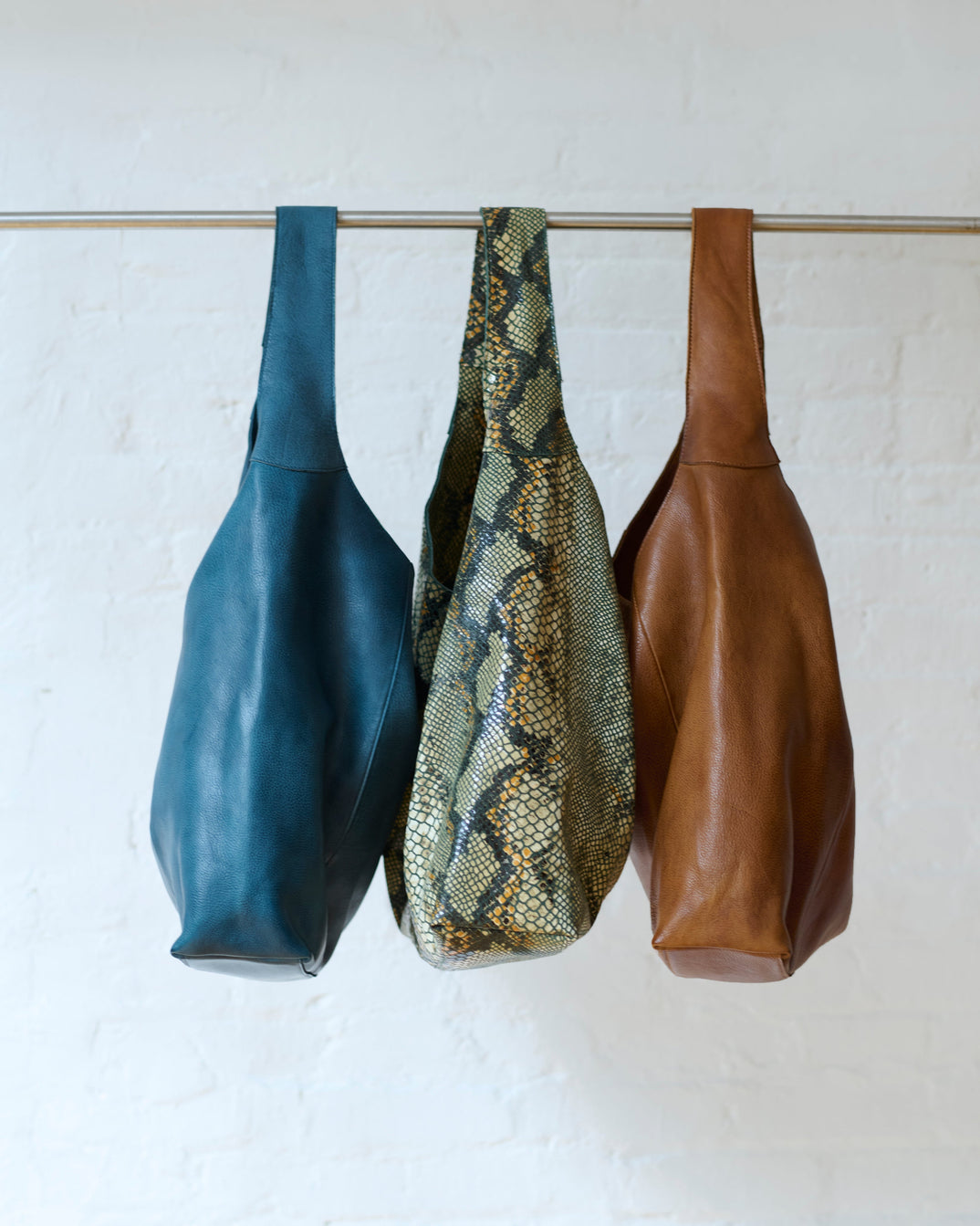
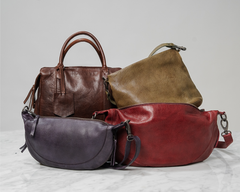
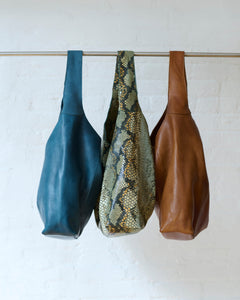
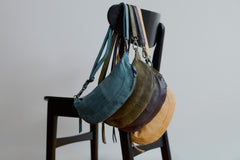
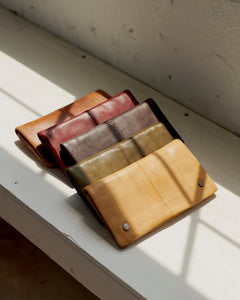
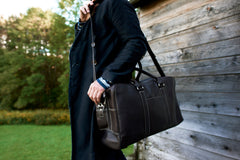
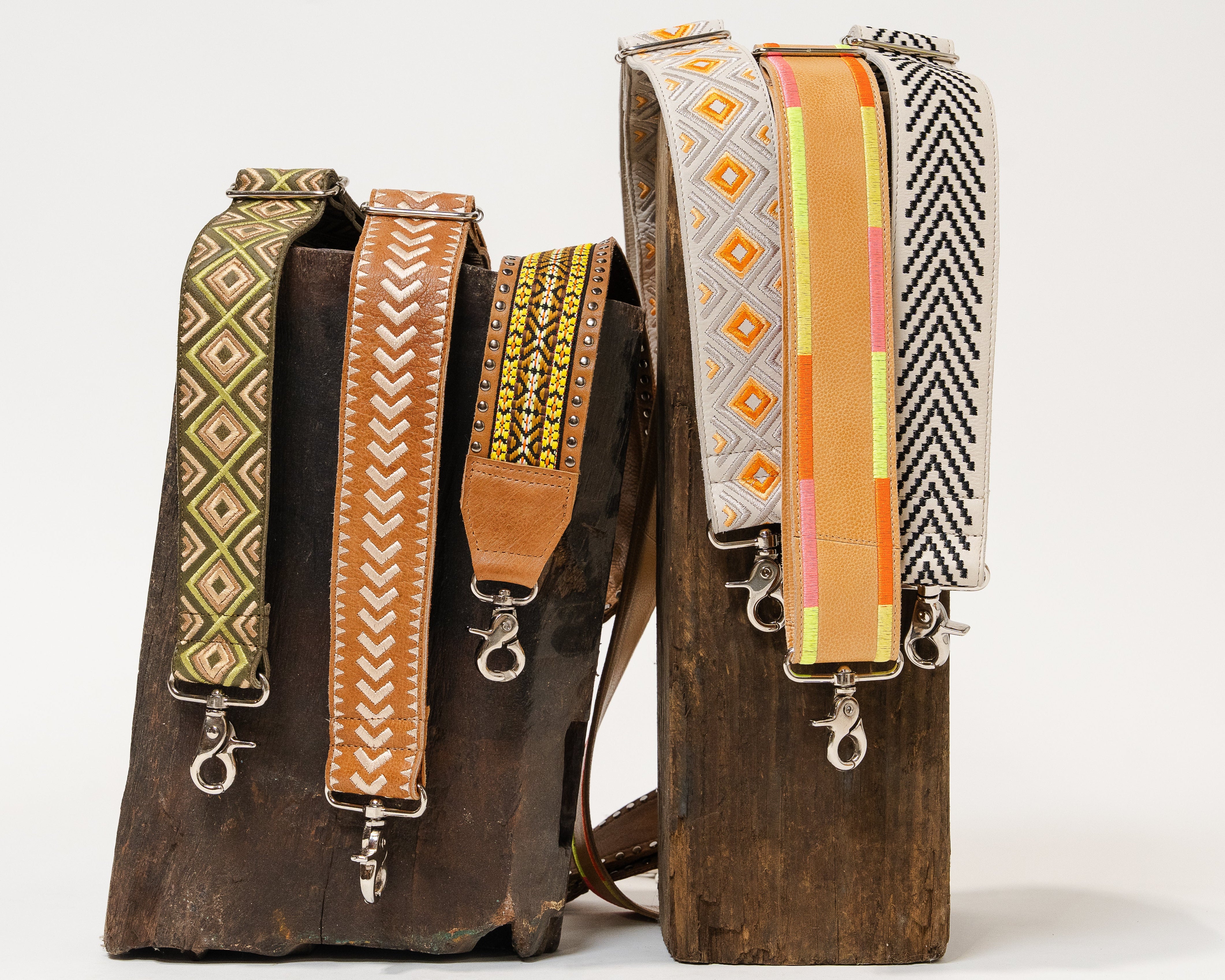
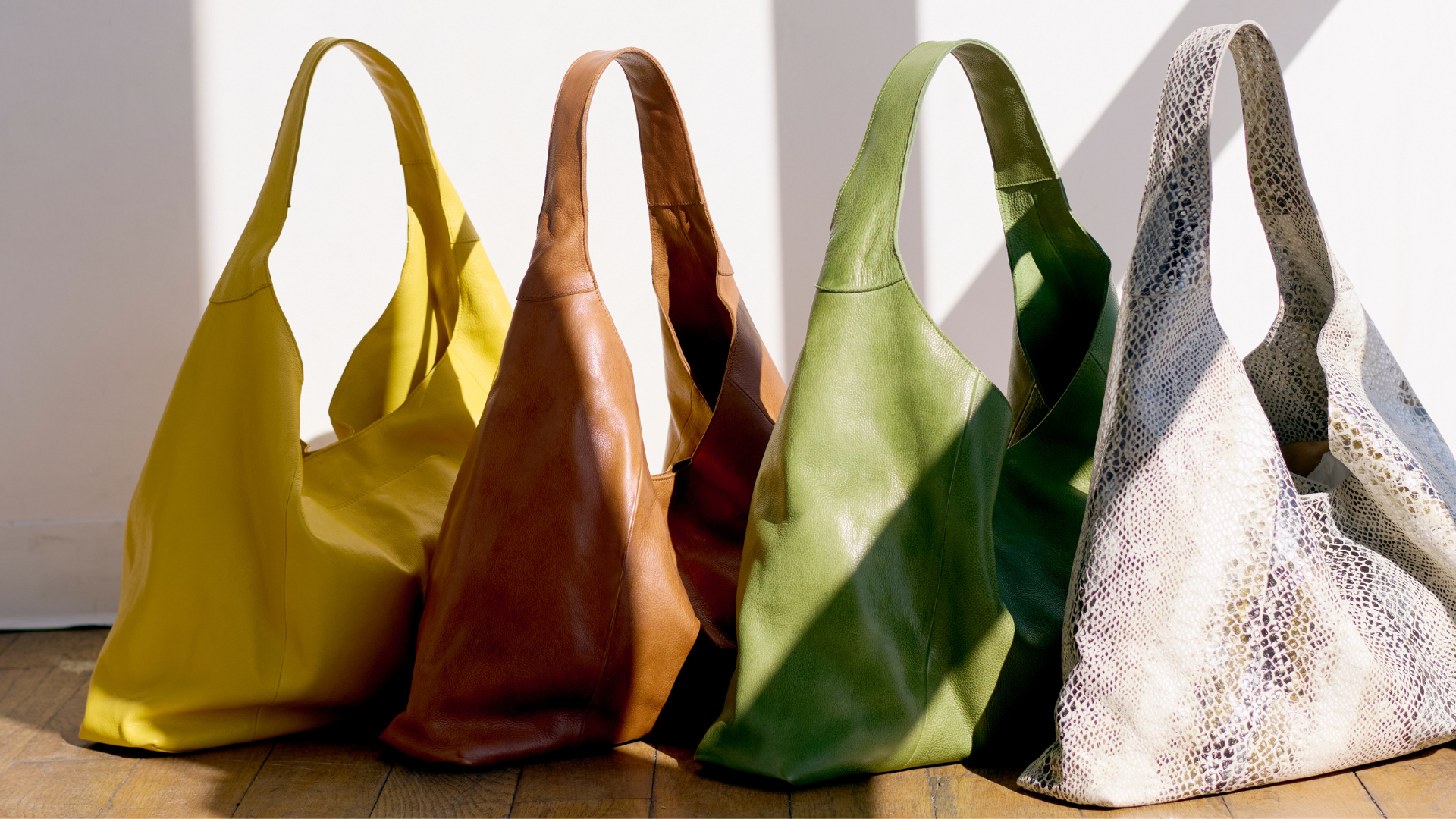
 Black
Black Bubble Black
Bubble Black Charcoal
Charcoal Cognac
Cognac Brown
Brown Cafe
Cafe Walnut
Walnut Almond
Almond Saddle
Saddle Eggplant
Eggplant Oxblood
Oxblood Burgundy
Burgundy Aubergine
Aubergine Tan
Tan Hazel
Hazel Ballet Slipper
Ballet Slipper Blush
Blush Camel
Camel Red
Red Orange
Orange Natural
Natural Burnt Orange
Burnt Orange Poppy
Poppy Plum
Plum Rosa
Rosa White
White Oat
Oat Grey
Grey Cobra
Cobra Desert Trail
Desert Trail Denim
Denim Indigo
Indigo Emerald
Emerald Teal
Teal Turquoise
Turquoise Sky Blue
Sky Blue Grass
Grass Green
Green Moss
Moss Olive
Olive Yellow
Yellow Lemon
Lemon Honey
Honey Chartreuse
Chartreuse Mustard
Mustard
